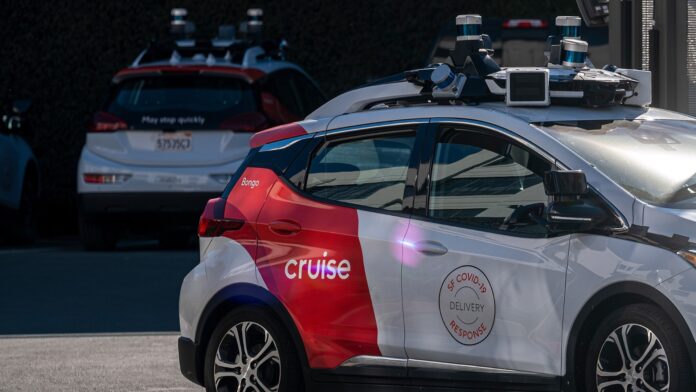US automotive safety officials have launched an investigation into General Motors’ self-driving unit Cruise.
In a filing(Opens in a new window), The National Highway Traffic Safety Administration (NHTSA) said it has been in receipt of complaints pertaining to the retrofitted Chevrolet Bolt EV self-driving vehicles “inappropriately hard braking” and “becoming immobilized.”
NHTSA officials stated that “although the two types of incidents appear to be distinct” they each result in the Cruise vehicles “becoming unexpected roadway obstacles.”
The regulators added: “This may introduce multiple potential hazards such as a collision with a Cruise vehicle, risk to a stranded passenger exiting an immobilized Cruise vehicle, or obstruction of other traffic including emergency vehicles.”
According to the NHTSA, the probe comes after three rear-end collisions reportedly took place after Cruise AVs braked hard. In its report, the agency says that human safety drivers were present in all three vehicles when they crashed. The investigation involves about 240 vehicles.
Speaking to The Verge, an NHTSA spokesperson said: “The investigation will determine the scope and severity of the potential problem and fully assess the potential safety-related issues posed by these two types of incidents.”
Cruise CEO Kyle Vogt told(Opens in a new window) The Associated Press that the company is fully cooperating with the federal investigation: “I am happy to help educate them on the safety of our products. Regulators are doing their job. They are scrutinizing things as they should, asking lots of questions.”
Earlier this year it had been revealed that Cruise had updated software in 80 of its autonomous rides following a crash that injured two people in June. The same month, more than half a dozen Cruise robotaxis stopped operating and sat in the middle of a busy San Francisco intersection(Opens in a new window) for hours, before employees arrived and manually moved them.
Recommended by Our Editors
The mishaps come as Cruise fights to receive regulatory approval to increase its number of AVs and expand its service from 30% of San Francisco to the entire city. In 2020, Cruise got the green light to test its driver-free cars in San Francisco and was able(Opens in a new window) to start charging(Opens in a new window) for these robotaxi services in June. And in November CEO Vogt announced(Opens in a new window) that the company was expanding its service from nighttime to daytime hours.
Cruise did not immediately respond to PCMag’s request for comment but a spokesperson told Associated Press that the company had driven nearly 700,000 fully autonomous miles “with zero life-threatening injuries or fatalities.”
The spokesperson added: “This is against the backdrop of over 40,000 deaths each year on American roads.”
Get Our Best Stories!
Sign up for What’s New Now to get our top stories delivered to your inbox every morning.
This newsletter may contain advertising, deals, or affiliate links. Subscribing to a newsletter indicates your consent to our Terms of Use and Privacy Policy. You may unsubscribe from the newsletters at any time.
Hits: 0
















